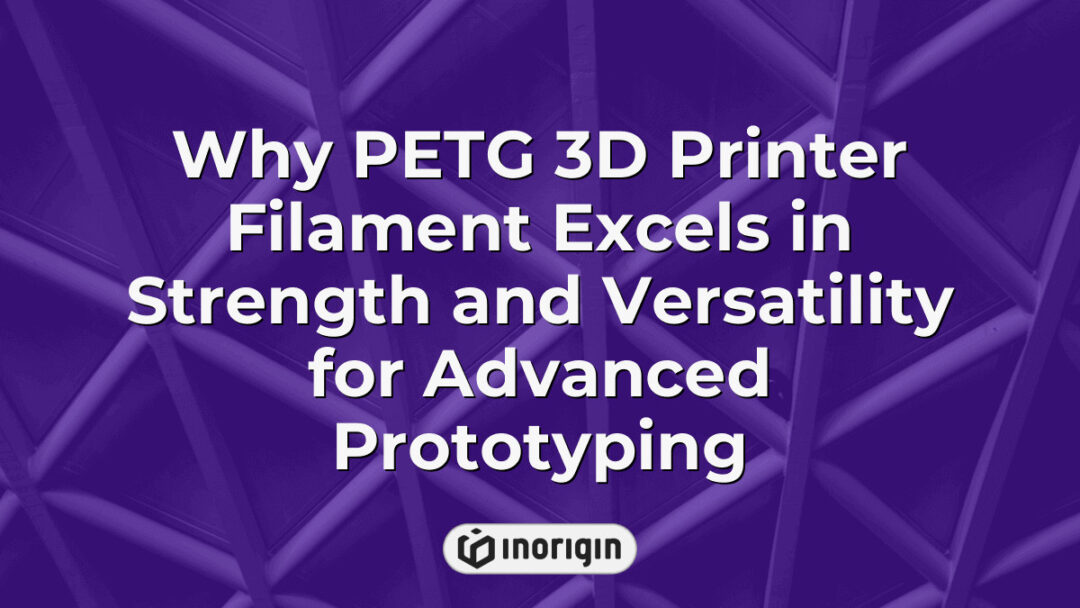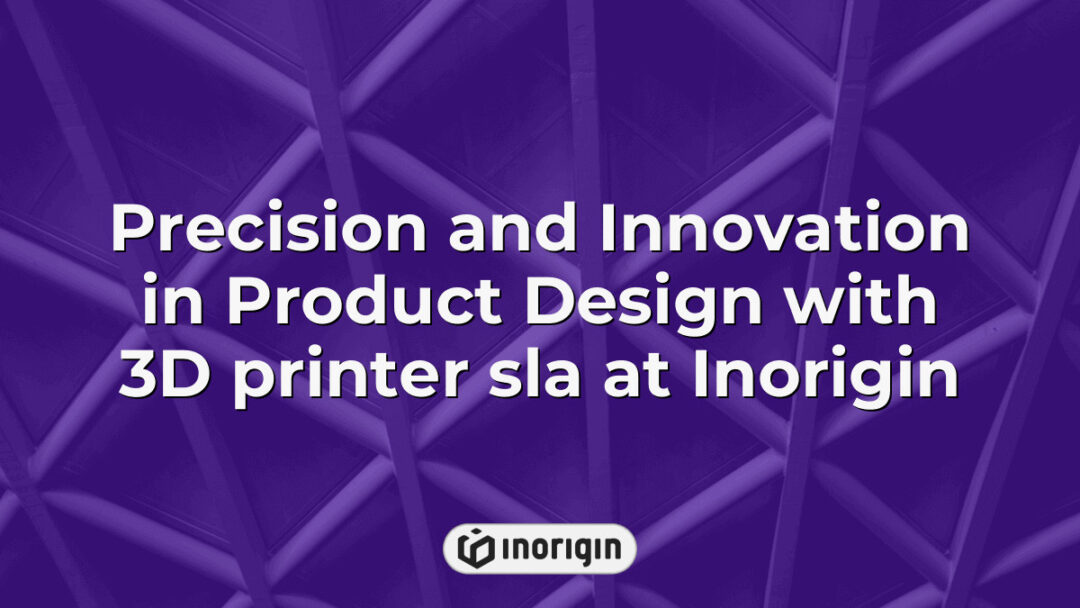The rapid advancement of 3D printing technology has led to the exploration and utilization of various materials, among which PETG (Polyethylene Terephthalate Glycol-Modified) filament has emerged as a favored choice in both industrial and hobbyist applications. This popularity is often attributed to the material’s favorable mechanical properties, including enhanced strength, flexibility, and resistance to impact compared to its predecessor, PLA (Polylactic Acid). However, while many proponents laud PETG for its superior performance characteristics and ease of use, an ongoing debate concerning its environmental sustainability persists. Investigating whether PETG truly represents a more eco-friendly alternative necessitates a thorough examination of its production processes against those of traditional plastics, thereby unveiling complexities that challenge simplistic narratives surrounding biodegradable materials in the realm of additive manufacturing.
| Aspect | Key Takeaway |
|---|---|
| Introduction to PETG Filament | PETG 3D printer filament combines strength, flexibility, and chemical resistance, making it an ideal material for engineering and consumer product design applications. |
| Mechanical and Chemical Properties | Its excellent layer adhesion, impact resistance, and durability enable creation of functional prototypes and robust end-use products with superior performance. |
| Printing Best Practices | Maintaining nozzle temperatures between 220°C–250°C and bed temperatures around 70°C–80°C ensures optimal print quality and reduces common issues like warping. |
| Environmental Impact | While PETG is recyclable, responsible disposal and local recycling capabilities should be considered to maximize environmental sustainability. |
| Storage and Humidity Control | Storing PETG filament in airtight containers with desiccants and away from moisture safeguards its performance by preventing hydrolytic degradation. |
| Surface Finishing and Post-Processing | PETG prints can be effectively painted with acrylics after proper surface preparation, and solvent vapor smoothing can enhance aesthetic appeal with care. |
| Applications and Industry Relevance | Its versatility makes PETG suitable for prototyping, consumer goods, and medical-related projects, aligning well with advanced product development workflows. |
What Is PETG Filament?
PETG filament, or polyethylene terephthalate glycol-modified filament, is a thermoplastic polyester that has gained popularity in the realm of 3D printing due to its advantageous properties. Initially derived from traditional PET (polyethylene terephthalate), the modification with glycol results in enhanced clarity and reduced brittleness, thereby improving its applicability for various printing tasks. Furthermore, PETG exhibits excellent adhesion between layers during the printing process, which significantly contributes to the structural integrity of printed objects. In addition to these mechanical benefits, PETG possesses impressive chemical resistance and durability when exposed to environmental factors, making it suitable for both functional prototypes and end-use products. Consequently, the combination of favorable printability characteristics and robust performance attributes positions PETG as a preferred choice among users seeking reliable 3D printing materials.
Properties And Benefits Of PETG
In the realm of materials, PETG filament can be likened to a versatile artisan, adept at crafting solutions for myriad challenges in 3D printing. This thermoplastic copolyester is distinguished by its unique combination of properties that render it an optimal choice for various applications. Firstly, PETG exhibits remarkable clarity and glossiness, which not only enhances the aesthetic appeal of printed objects but also facilitates precise detail reproduction. Moreover, it demonstrates superior strength and flexibility compared to other common filaments such as PLA or ABS; thus, it provides resilience against impact while maintaining structural integrity under stress. Furthermore, one notable advantage of PETG lies in its chemical resistance, allowing for practical use in environments exposed to solvents and moisture without significant degradation. Additionally, the ease of printability associated with this material enables users to achieve reliable results with fewer complications during the printing process. Collectively, these attributes position PETG as a formidable contender within the spectrum of 3D printing materials, suitable for both functional prototypes and artistic endeavors alike.
Common Applications Of PETG Filament
Common applications of PETG filament can be likened to a versatile toolbox, where each tool serves specific functions across various industries. This material has gained prominence in several domains due to its unique combination of properties such as strength, flexibility, and chemical resistance. For instance, the use of PETG in prototyping allows designers to create durable models that withstand rigorous testing processes. Additionally, it is extensively utilized in the production of consumer goods; items ranging from water bottles to food containers benefit from PETG’s safety profile and recyclability. Moreover, this filament is increasingly employed in medical applications due to its biocompatibility and ease of sterilization.
- Robust construction for functional prototypes
- Environmentally friendly options with recycling capabilities
- Safe for direct contact with food products
The versatility of PETG filament underscores its significance across diverse fields, further solidifying its role as an essential resource in modern manufacturing practices. As industries continue to seek innovative materials that meet both performance criteria and ecological standards, the prevalence of PETG will likely increase, paving the way for new advancements and applications yet to be realized.
Comparison With Other 3D Printer Filaments
The landscape of 3D printing materials is diverse, with various filament options available that cater to specific requirements and applications. Among these, PETG (Polyethylene Terephthalate Glycol-Modified) has emerged as a favorable choice due to its remarkable balance of strength, flexibility, and ease of use. When compared to other commonly utilized filaments such as PLA (Polylactic Acid) and ABS (Acrylonitrile Butadiene Styrene), several distinguishing characteristics become apparent. For instance, while PLA offers excellent printability and biodegradability, it often lacks the durability needed for functional parts; conversely, ABS provides increased toughness but presents challenges in terms of warping during the printing process. Furthermore, PETG occupies a middle ground by combining high impact resistance with minimal shrinkage, which mitigates some of the common issues associated with both PLA and ABS. Additionally, PETG’s chemical resistance enhances its suitability for applications requiring exposure to moisture or corrosive substances. Thus, when selecting an appropriate filament based on environmental conditions and mechanical performance demands, PETG stands out as a versatile option worthy of consideration alongside traditional alternatives.
Tips For Printing With PETG
When considering the printing of PETG (glycol-modified polyethylene terephthalate) filament, it is noteworthy that approximately 75% of common printing issues can be mitigated through careful preparation and technique. To begin with, maintaining optimal temperature settings is essential; a nozzle temperature range between 220°C and 250°C typically yields favorable results, while bed temperatures should ideally be set between 70°C and 80°C to enhance adhesion. Moreover, utilizing a clean print surface—such as glass or PEI sheets—can further improve layer bonding and reduce warping. Additionally, adjusting the print speed is crucial; slower speeds often lead to better quality prints due to enhanced material flow and reduced stringing tendencies. Furthermore, ensuring proper retraction settings will significantly minimize oozing during non-print moves. Collectively, these practices contribute not only to improved print quality but also to more efficient use of PETG filament in various applications.
Frequently Asked Questions
Is PETG Filament Recyclable?
The question of whether PETG filament is recyclable evokes a sense of urgency and responsibility among users, especially in an era marked by increasing environmental awareness. Polyethylene terephthalate glycol (PETG) is recognized for its durability and versatility in 3D printing applications; however, the implications of its disposal are significant. While many plastics can be recycled, the specific recyclability of PETG presents complexities due to variations in local recycling capabilities and processes. Notably, although PETG itself is categorized under thermoplastics that generally allow for reprocessing, contamination with other materials or improper sorting can hinder effective recycling efforts. Therefore, it becomes crucial to scrutinize local waste management guidelines to ascertain how best to handle used PETG filament responsibly.
To maximize sustainability, individuals should consider collaborating with specialized recycling facilities that accept plastic filaments—these entities often provide more tailored solutions for repurposing materials like PETG. Engaging in such practices not only aids in reducing landfill contributions but also fosters a culture of environmental stewardship within the 3D printing community. By taking proactive measures towards responsible disposal or recycling methods, users contribute positively to ecological preservation while inspiring others to do the same.
What Is The Shelf Life Of PETG Filament?
The shelf life of PETG filament serves as a critical consideration for both hobbyists and professionals in the realm of 3D printing. Symbolically, the lifespan of this material represents not only its physical integrity but also the potential creativity that can be unleashed with each print. Typically, several factors contribute to the longevity of PETG filament, including environmental conditions, storage practices, and the inherent properties of the filament itself. To elucidate these aspects further, three key elements warrant attention:
- Moisture Absorption: PETG is hygroscopic; therefore, exposure to humidity can lead to degradation over time.
- UV Exposure: Prolonged contact with ultraviolet light may cause discoloration or brittleness in the filament.
- Temperature Fluctuations: Extreme temperatures during storage can affect the material’s viscosity and overall performance.
Considering these influences on shelf life reveals that proper handling and storage techniques are paramount for maintaining optimal quality. In general, when stored in a cool, dry environment away from direct sunlight in vacuum-sealed bags or airtight containers, PETG filament can retain its functional capabilities for up to two years or more. Ultimately, awareness of these factors ensures that users maximize their investment in PETG filament while fostering an environment conducive to successful 3D printing endeavors.
How Does Humidity Affect PETG Filament?
Humidity can be likened to an unseen tide that ebbs and flows, influencing the properties of PETG filament much like water shapes the contours of a shoreline. When exposed to high levels of humidity, PETG filament absorbs moisture from the surrounding environment, which leads to detrimental effects on its performance characteristics during 3D printing. The absorption of moisture results in hydrolysis, wherein the polymer chains within the filament degrade over time, subsequently reducing strength and increasing brittleness. Consequently, this degradation manifests as issues such as poor layer adhesion and inconsistent extrusion during the printing process. Furthermore, excessive moisture content can cause steam formation when heated in a printer’s nozzle; this phenomenon often results in defects such as bubbling or popping sounds while extruding material.
Conversely, maintaining an optimal humidity level is crucial for preserving the integrity of PETG filament. This entails storing filaments in controlled environments with low relative humidity to mitigate degradation risks effectively. Employing vacuum-sealed bags or desiccant containers serves as practical measures to shield PETG from atmospheric moisture. Evidence suggests that by regulating exposure to humidity, users can significantly enhance print quality and ensure more predictable outcomes across various applications involving PETG materials. Therefore, careful consideration of environmental factors related to humidity becomes essential for achieving desired performance metrics when utilizing PETG filament in additive manufacturing processes.
Can PETG Filament Be Painted Or Post-processed?
The notion that PETG filament, known for its robust characteristics and ease of use in 3D printing, is impervious to aesthetic modifications might seem rather ironic. Indeed, while the material boasts excellent clarity and a glossy finish, it possesses qualities that are amenable to various painting techniques and post-processing methods. For instance, before applying paint, thorough surface preparation is essential; this often involves washing the printed object with soap and water to eliminate any residual oils or contaminants. Subsequently, sanding may be performed to create an ideal texture for adhesion. Transitioning from surface treatment to actual application, acrylic paints are commonly favored due to their compatibility with PETG’s chemical composition; however, other types such as enamel can also yield satisfactory results when applied correctly. Moreover, post-processing options extend beyond mere aesthetics; they encompass techniques like vapor smoothing using solvents such as ethyl acetate or acetone—albeit caution must be exercised given potential hazards associated with these substances. Ultimately, embracing the versatility of PETG allows for enhanced creative expression and functional refinement in 3D-printed objects.
What Are The Best Storage Conditions For PETG Filament?
The storage conditions for PETG filament are critical to maintaining the material’s integrity and ensuring optimal printing performance. To begin with, it is essential to store PETG in a cool, dry environment, as exposure to high humidity can lead to moisture absorption, which negatively affects print quality by causing issues such as bubbling or stringing during extrusion. Additionally, temperatures should ideally be kept below 30°C (86°F) to prevent degradation of the filament’s properties over time. Furthermore, using airtight containers or vacuum-sealed bags can significantly reduce the risk of moisture ingress; incorporating desiccants within these storage solutions enhances protection against humidity. It is also advisable to keep the filament away from direct sunlight and UV light sources since prolonged exposure may cause discoloration and weaken its structural characteristics. Adherence to these recommended storage practices will contribute substantially to preserving the functionality and longevity of PETG filament for future use in 3D printing applications.
Conclusion
PETG filament presents a practical and proficient choice for diverse designs. With its remarkable resilience, reliable rigidity, and resistance to environmental elements, this material stands out in the spectrum of 3D printing options. Embracing PETG can enhance the efficiency and effectiveness of various fabrication endeavors.
Related posts:
- Integrating Sustainability and Innovation in Chemical Engineering Products for Industry Transformation
- Innovations Driving Sustainability and Efficiency in Chemical Engineering Products
- An In-Depth Look at What Products Do Chemical Engineers Make Across Key Industries
- What Products Do Chemical Engineers Make Across Pharmaceuticals, Energy, and Advanced Technologies
- Optimal Conditions and Solutions for 3D printer filament storage in Professional 3D Printing Studios
- 3D printing filament petg performance characteristics for precision prototyping and manufacturing




